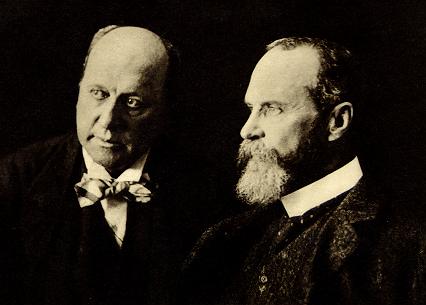"To an outside observer ( WHAT'S AN INSIDE OBSERVER TO A GRAPH? ), though, there’s something interesting about that graph: the decades after government got so big just happen to be the decades of greatest shared prosperity in the history of the U.S ( THAT DOESN"T AUTOMATICALLY MEAN THAT THE PROSPERITY WAS CAUSED BY THE GOVERNMENT. UNINTERPRETED, IT'S POSSIBLE THAT THE GROWTH WOULD HAVE BEEN HIGHER WITH LESS GOVERNMENT ). A large and growing middle class, rising levels of education, greater income mobility, continued increases in life expectancy, dramatic improvements in the quality of life of the elderly, and so on, all happened only after government revenues rose to what Mankiw apparently believes were objectionable levels ( THAT CAN ONLY BE A FUNCTION OF WHAT YOU WANT THE GOVERNMENT TO DO ). That doesn’t necessarily mean that the increase in the size of government had anything to do with the postwar economic boom. But, at the very least, Mankiw’s graph shows that the supposed negative economic effects of government-spending increases are, at best, empirically very hard to see. ( THE GRAPH DOESN'T TELL YOU ANYTHING ABOUT THAT QUESTION WITHOUT INTERPRETATION ).
Of course, for “advocates of limited government”—people for whom bigger government and higher taxes are, in philosophical terms, bad things—this is irrelevant( YOU MEAN THESE: A large and growing middle class, rising levels of education, greater income mobility, continued increases in life expectancy, dramatic improvements in the quality of life of the elderly: THAT'S SILLY ) Their case against government is not primarily driven by its practical impact on people’s everyday lives( THAT'S SILLY ) but rather by the fact that bigger government necessarily entails greater intrusions and constraints on the economic freedom of individuals ( DO PEOPLE ENJOY INTRUSIONS AND CONSTRAINTS? ). But for the rest of us, who are more pragmatic in our approach to finding the proper balance between the roles of the public and private sectors in the economy ( LIKE ME? ), Mankiw’s graph certainly offers no evidence that we should fret about a possible increase in government spending. (I’m not saying that evidence doesn’t exist, but Mankiw’s graph doesn’t provide it.)"
What the graph purported to show was that, for good or ill, the government continues to increase in size, no matter what. It is that mechanical march towards more government that's worrying. After all, at a certain point, even pragmatists will surely concede that the size of government could be a problem, or maybe it's still an open question among pragmatists as to whether Planned Economies work. In any case, this was a "Straw Man Argument", with emphasis on the straw.







































No comments:
Post a Comment